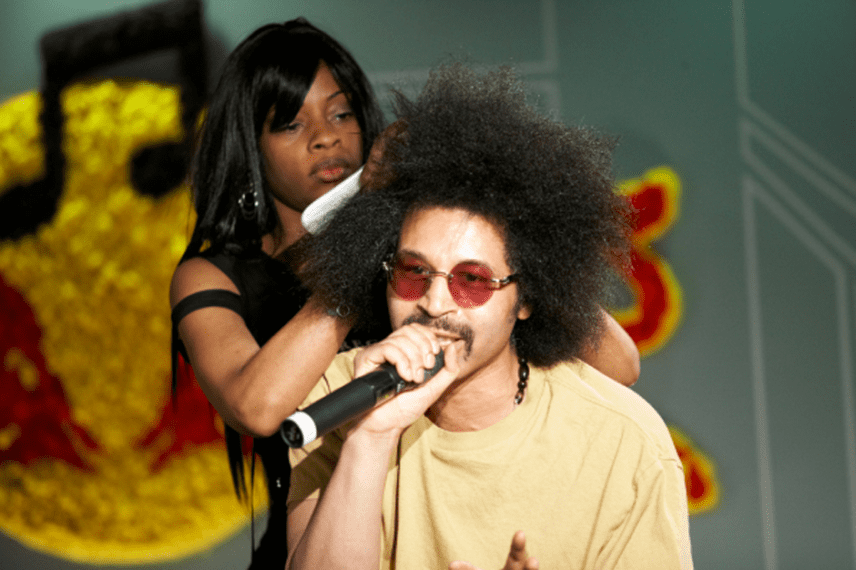Dave Clews dissects this high-energy collaboration between two Detroit heavyweights.
Detroit-based DJ, producer and label owner Kenny Dixon Jr, aka Moodymann, has been at the forefront of the house scene since the mid 90s, with a string of album, single and EP releases as long as your arm. Blending strands of jazz, blaxploitation-era funk, soul and R&B with his own trademark style of gritty house, his most recent album release was received with high acclaim.
Co-produced by fellow Detroiter – and KDJ signing – Andrés, and boasting a high-energy, sample-heavy sound, we single out the sixth track on the album, ‘Lyk U Use 2’, for the breakdown treatment.
Sound Palette / Influences
With its rapid, tuned-up beat, crunchy Rhodes chords and sweet string and vocal samples, ‘Lyk U Use 2’ ventures well outside of typical house genre into pop, hip-hop and R&B territory. As with a number of Moodymann’s previous tracks, the Prince influence is strong here – from the styling of the text in the title to the tongue-in-cheek, seductive vibe of the lyrics – and there’s also a definite nod to Outkast’s massive crossover hit ‘Hey Ya’. The laconic vocal delivery seems to defuse the breathless speed of the track, with the effect that it doesn’t feel as quick as the 180 bpm+ tempo it actually is.
Structure
For the most part, the song follows a fairly standard intro/verse/chorus/break/outro pop structure, with at least one of the choruses (at 1:35) presented as a filtered breakdown; the filter on the beat and keyboards gradually opens back up to full brightness as the section progresses.
At 3:34 in the vinyl version embedded above, the track breaks down into a broken-beat sequence of cut-up vocal and orchestral string samples, before resuming into a full double chorus and segueing into an end section made up of a slowed-down take on ‘Freeki MF’. At the same point in the CD version (which also accompanies the official video), the track breaks away into a looped sample of the intro from Tom Jones’s version of the Bill Withers classic ‘Ain’t No Sunshine’.
Drum Track
Pegged at a frenetic 183 bpm, the main rhythm track of ‘Lyk U Use 2’ is composed of a busy, live-sounding drum loop composed of high-tuned kick and snare samples (although the kick also has plenty of weight), skittering 16th-note hat and pitched-up 808 snare fills every eight bars. The 808 snare weighs in on top of the original snare during the chorus sections. Overall, there’s a ticking eighth-note feel to the percussion groove (although at a tempo this quick, it feels more like sixteenths), with the accent on odd numbers, and there’s a hint of tambourine in there too. Every fourth bar there’s a ringing ride cymbal hit on the downbeat, taking the place of what would otherwise be a crash cymbal if the groove were heavier. Here’s what the main kick, snare and hat groove looks and sounds like:
Chord Progression
The main chord progression is handled by a Rhodes piano part. It sounds like a mixture of parts, with some played live and sections possibly resampled or edited. Deeper analysis of the track reveals that there are actually two Rhodes parts occurring in the main loop: the first part simply holds down chords that change on the downbeat of every bar, in a F#maj7 > Fm7 > Bbm7 > F#add9 progression, as shown below:
Over the top of this base layer of chords, a brighter riff, played slightly higher up the keyboard, chimes in in the second bar of each four-bar loop:
The two parts dovetail together beautifully. Here’s what they sound like when merged:
The whole thing is underpinned by a simple bass part made up mainly of the root notes of the chords, namely F# > F > Bb > Ab, with that final Ab taking on the role of the added ninth in the F#add9 chord:
Another nice little musical flourish worth noting is the sampled flute trill that occurs as sonic punctuation every eight bars in each chorus.
Vocals
Dixon’s own lead vocals are laconically delivered through a barrage of effects. What appears to be a narrow-band EQ and a hint of distortion are followed by a significant amount of delay, with a half-note delay time dialled in (it sounds like a quarter note, but again, the song’s fast tempo has an effect here). The delay effect’s feedback is set moderately low, so there’s only really one prominent repeat. However, the way that the repeats appear more audible in the gaps between the original vocal lines suggests that the effect return may have been compressed by a sidechain compressor with the main vocal fed into the sidechain input. This would have the effect of lifting the repeats up in volume when the vocal isn’t playing, while at the same time avoiding the repeats cluttering things up when the vocal is happening – a neat trick.
The verse contains subtle call-and-response vocals – “do you really wanna go?”, “do you really need me?” and “do you really want me?” – depending on where you are in the song. A female backing vocal sample adds further flavour to proceedings every now and then. The entire outro chorus section then goes on to make full use of a collage of these vocal parts in place of the regular chorus lyric.






12.07 PM
This is great. Could we get those drum samples??
07.23 PM
Absolutely fantastic post